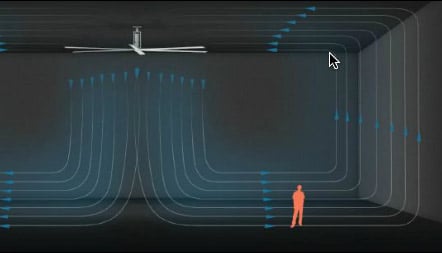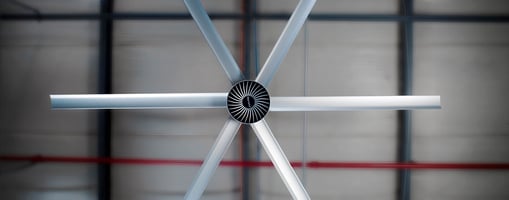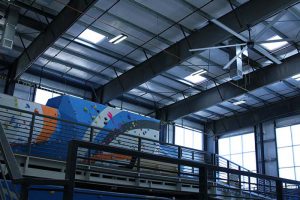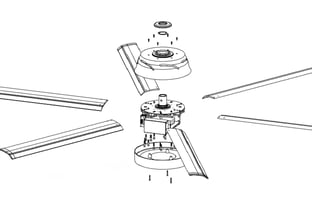Constant movement and running machinery with lots of people are common scenes in warehouses. With...
4 Things that Determine the Cost of an HVLS Fan
High-volume, low-speed (HVLS) fans are extremely popular; they can be found in warehouses, gyms, and large retail stores all over the world. In fact, HVLS fans are so popular that many different varieties are now on the market. As a result, it can be challenging to understand the cost of an HVLS fan. Here are four things that typically influence the price of a high-volume, low-speed fan:
1. The Size of the Fan

The larger an HVLS fan is, the more power it has to push air down. HVLS fan size should be determined by two things: the size of the room and the height of its ceiling. For smaller spaces with common ceiling heights of between 8' and 12', a 6' or 12' HVLS fan is usually best. For larger spaces, an HVLS fan of up to 24' will work better. The bigger the fan, the higher the cost. As we've mentioned previously, an 8' fan will be on the lower end of the price spectrum, while a 24' HVLS fan will cost more.
2. The Installation of the Fan

Often overlooked, installation can add a significant cost to the fan's price. You might consider installing an area to save money on your HVLS fan purchase, but in reality, this is an area where paying more for good service is well worth it. According to industry experts, a poorly installed fan can lead to inefficient cooling and increased use of power, two things that will raise the cost of your fan.
3. Air Exchange Rate

HVLS fans work by moving air around, a process that creates a small amount of negative pressure in a room. The measurement of this process is known as air exchange rate or sometimes air change rate, abbreviated ACH or ac/h.
How Exactly is Air Exchange Measured?
It's a scientific process, but it involves the use of tracer gases that are not naturally present in a room. The concentration of these tracer gases is then measured after the fan has been used for a period of time, which indicates how much air the fan can move. Since rising hot air can often be hot enough to overpower the cool air pushed down by the fan, your fan must have an air exchange rate that is high enough to effectively cool the room it's installed in. Fans with a higher ac/h rate will usually cost more.
4. Warranty

You might be wondering how your warranty impacts the cost of your fan. A longer warranty can save you a substantial sum over the life of a fan. That's because you will pay less for repairs if something goes wrong. Even if two fans are equal in upfront cost, the fan with the better warranty will actually cost you less in the long run. While price shopping for fans, make sure to keep the warranty in mind. A long warranty is a sign that a manufacturer is confident in their products; a shorter warranty, on the other hand, should raise some questions.
Summary:
Determining the exact cost of an HVLS fan depends on your particular cooling need. These four factors will help you understand what variables impact the cost of a fan so that you can gain a better understanding of the various HVLS fan options that are available on the market today.


